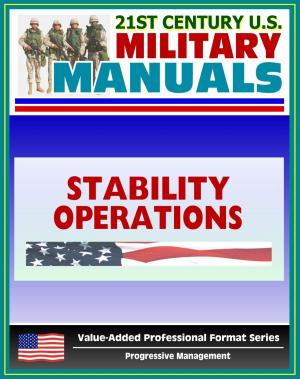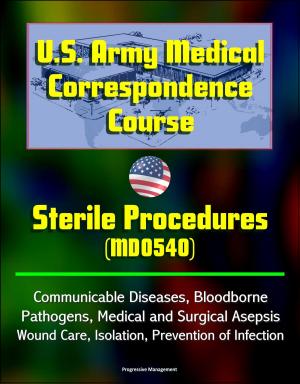Maritime Improvised Explosive Devices: A Threat Based Technology Study - Use of MIEDs by Terrorists and the Navy's Explosive Ordnance Disposal (EOD) Capability to Counter With Divers and Robots
Nonfiction, History, Military, Naval, Social & Cultural Studies, Political Science| Author: | Progressive Management | ISBN: | 9781370095001 |
| Publisher: | Progressive Management | Publication: | May 9, 2018 |
| Imprint: | Smashwords Edition | Language: | English |
| Author: | Progressive Management |
| ISBN: | 9781370095001 |
| Publisher: | Progressive Management |
| Publication: | May 9, 2018 |
| Imprint: | Smashwords Edition |
| Language: | English |
This excellent report has been professionally converted for accurate flowing-text e-book format reproduction.
Over the last thirteen years, the world saw an increased use of improvised explosive devices (IEDs) by violent extremists and terrorist groups. Due to the simplicity and availability of IED making material, any willing person with limited knowledge can make IEDs. Given that the surface of the earth is eighty percent water, the maritime environment is a likely threat domain for terrorist activities. Navy Explosive Ordnance Disposal (EOD) has the sole capability in the Department of Defense (DOD) for countering the maritime improvised explosive device (MIED) tactical threat to United States national interests and security. EOD divers, with limited equipment, are still the primary resource to render safe the waterborne explosive threat. The wars in Iraq and Afghanistan proved that robotics and unmanned tools are essential to EOD operations ashore for safety and standoff from IEDs. Unfortunately, use of robotics in the maritime environment for EOD operations is relatively new and unproven. The primary thesis question is: "How can Navy Explosive Ordnance Disposal counter the MIED threat in the contemporary operational environment?" This thesis identifies a capability gap in safely countering MIEDs and recommends a materiel solution in closing the gap.
CHAPTER 1 INTRODUCTION * Maritime Improvised Explosive Devices: A Maritime Threat * Research Question * Personal Qualifications * Assumptions * Terms and Definitions * Limitations * Scope and Delimitations * Significance of Study * Summary and Conclusion * CHAPTER 2 LITERATURE REVIEW * Organization * Background and Threat * Policy * U.S. Navy EOD Mission * U.S. Navy EOD Current Technology * The Perceived Capability Gap and Potential Solutions * U.S. Navy EOD Robotic Future * Summary and Conclusion * CHAPTER 3 RESEARCH METHODOLOGY * Method * Defining the Problem * Data Collection * Description, Analysis, and Interpretation * Description * Analysis * Interpretation * Summary and Conclusion * CHAPTER 4 ANALYSIS * Organization and Purpose * The MIED Threat and the Presence of a Capability Gap * Remaining Secondary Research Questions * Doctrine * Organization * Training * Materiel * Reviewing the Capability Gap * Analysis of a Robotic Solution to C-MIED * Summary and Conclusion * CHAPTER 5 CONCLUSIONS AND RECOMMENDATIONS * Organization and Purpose * Recommendations * Future Studies * Conclusion * APPENDIX A CONTEMPORARY MIED ATTACKS * REFERENCE LIST
This excellent report has been professionally converted for accurate flowing-text e-book format reproduction.
Over the last thirteen years, the world saw an increased use of improvised explosive devices (IEDs) by violent extremists and terrorist groups. Due to the simplicity and availability of IED making material, any willing person with limited knowledge can make IEDs. Given that the surface of the earth is eighty percent water, the maritime environment is a likely threat domain for terrorist activities. Navy Explosive Ordnance Disposal (EOD) has the sole capability in the Department of Defense (DOD) for countering the maritime improvised explosive device (MIED) tactical threat to United States national interests and security. EOD divers, with limited equipment, are still the primary resource to render safe the waterborne explosive threat. The wars in Iraq and Afghanistan proved that robotics and unmanned tools are essential to EOD operations ashore for safety and standoff from IEDs. Unfortunately, use of robotics in the maritime environment for EOD operations is relatively new and unproven. The primary thesis question is: "How can Navy Explosive Ordnance Disposal counter the MIED threat in the contemporary operational environment?" This thesis identifies a capability gap in safely countering MIEDs and recommends a materiel solution in closing the gap.
CHAPTER 1 INTRODUCTION * Maritime Improvised Explosive Devices: A Maritime Threat * Research Question * Personal Qualifications * Assumptions * Terms and Definitions * Limitations * Scope and Delimitations * Significance of Study * Summary and Conclusion * CHAPTER 2 LITERATURE REVIEW * Organization * Background and Threat * Policy * U.S. Navy EOD Mission * U.S. Navy EOD Current Technology * The Perceived Capability Gap and Potential Solutions * U.S. Navy EOD Robotic Future * Summary and Conclusion * CHAPTER 3 RESEARCH METHODOLOGY * Method * Defining the Problem * Data Collection * Description, Analysis, and Interpretation * Description * Analysis * Interpretation * Summary and Conclusion * CHAPTER 4 ANALYSIS * Organization and Purpose * The MIED Threat and the Presence of a Capability Gap * Remaining Secondary Research Questions * Doctrine * Organization * Training * Materiel * Reviewing the Capability Gap * Analysis of a Robotic Solution to C-MIED * Summary and Conclusion * CHAPTER 5 CONCLUSIONS AND RECOMMENDATIONS * Organization and Purpose * Recommendations * Future Studies * Conclusion * APPENDIX A CONTEMPORARY MIED ATTACKS * REFERENCE LIST















